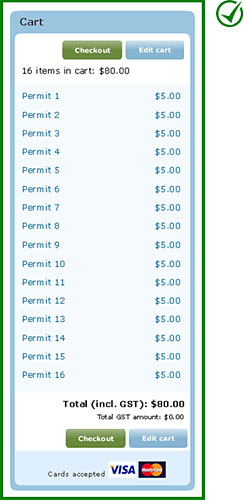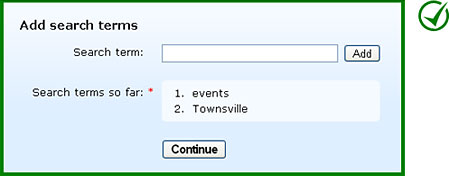Module 4: Checkpoint 7—Primary actions
| Conformance: Mandatory |
Requirements
Provide only one primary action per form.
Benefits of conformance
- Faster completion times.
- Supports user expectations around use of the 'enter' key.
Risks of non-conformance
Increased cognitive load (decision making).
Implementation advice
More information
A process should only present the user with a single primary action. Any number of secondary actions can be displayed.
The primary action button can be repeated.
Note: It is best practice to ensure the 'enter' key performs the primary action. This can be difficult if the primary action is not the first action on the screen. There are methods for ensuring that the primary action is always performed when the user hits submit, but they are out of scope for this document. Please refer to the independent implementation advice.

Correct implementation : Only one primary action (Checkout) appears in this example even though it is repeated.
If a user is required to complete a sub-process within a process, the primary action for the process must either be disabled or removed, while the user is working with the sub-process.
For example: The following process requires a user to add a search term before being able to continue on the search.

Correct implementation: With the 'Continue' button disabled and greyed out the user only has one primary action, to 'Add' a search term. This makes the path clear and obvious.

Correct implementation: With the 'Continue' button removed the user only has one primary action. This makes the path to completion clear and obvious.

Result: After the user has added one or more search terms the 'Continue' button is now active/displayed. The user now has one primary action to continue, and a secondary action to add another.
Retaining the 'Add' button clearly shows the user that another search term can be added.

Incorrect implementation: With both the 'Continue' and the 'Add' button enabled the user is presented with two primary actions. This can cause confusion and increase the failure rate of the application.